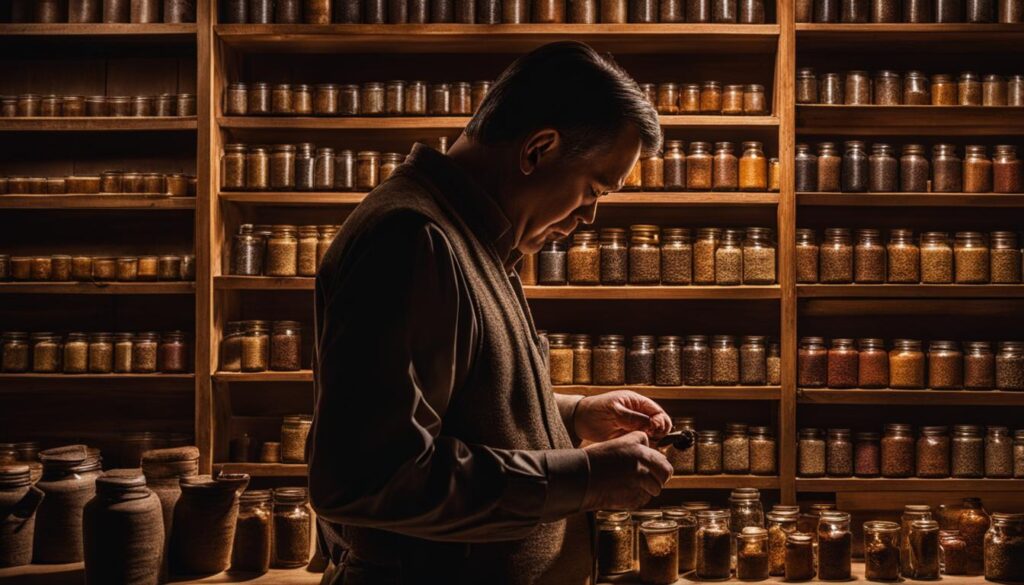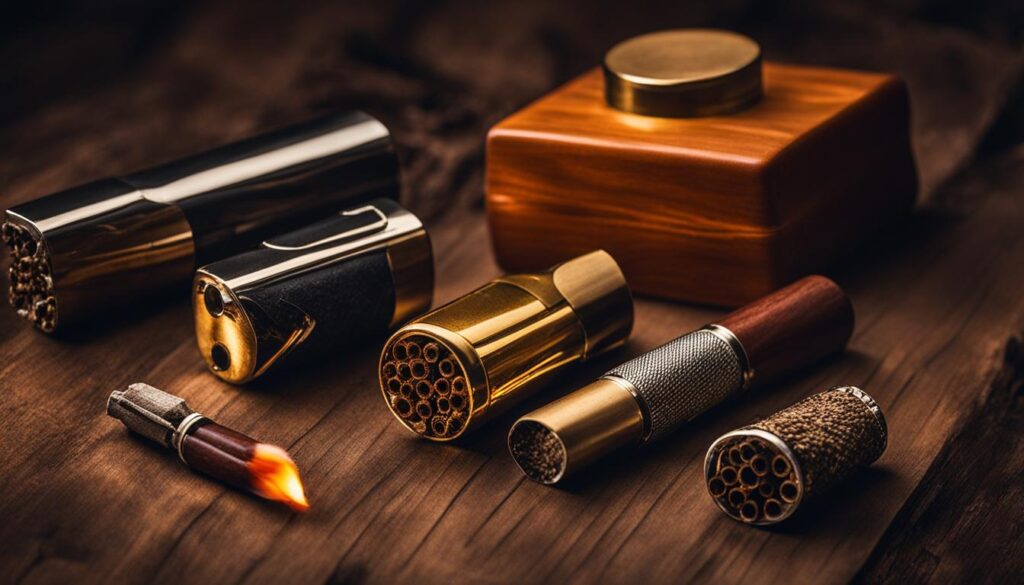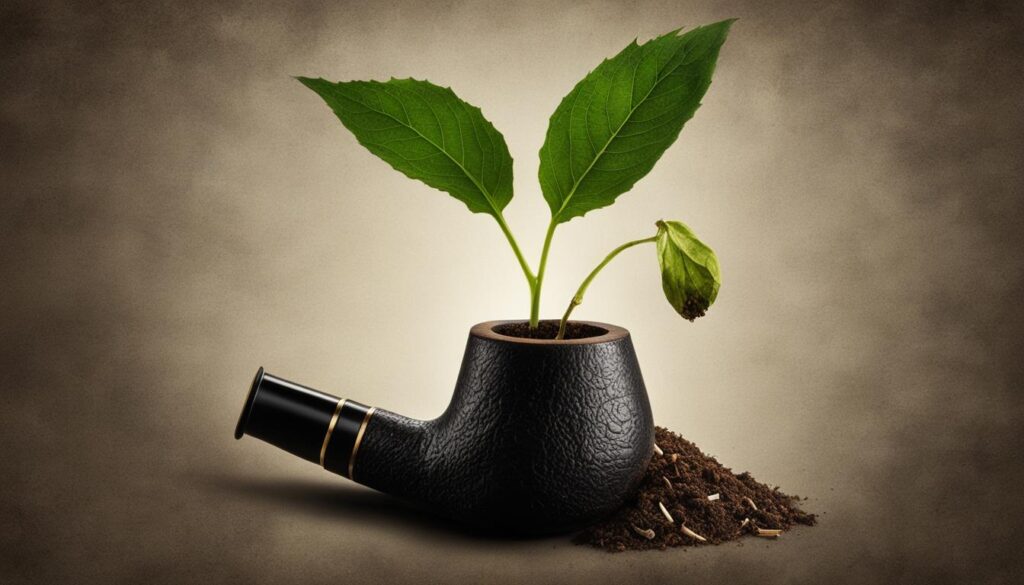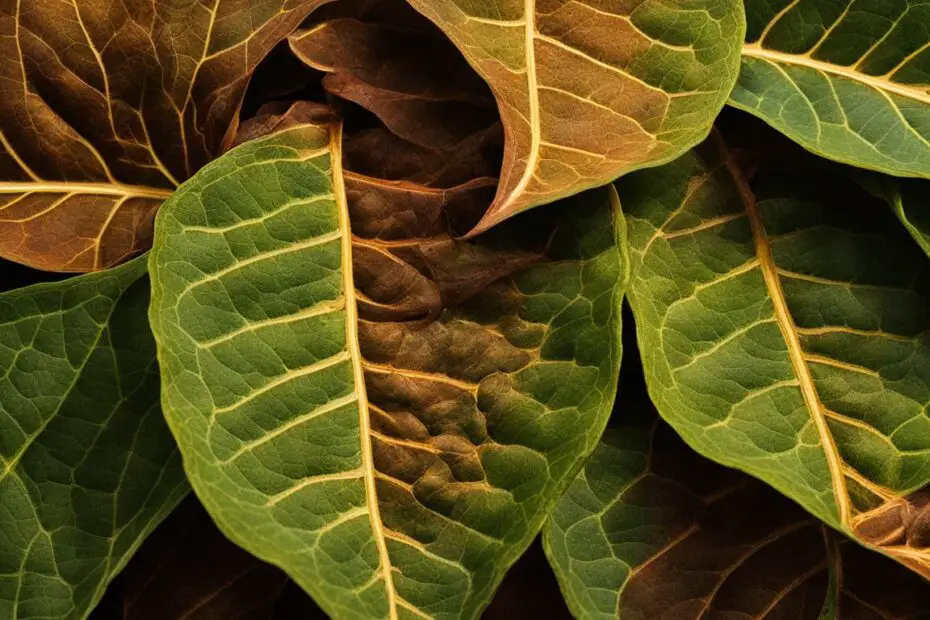Tobacco, with its deep-rooted history and controversial reputation, has played a significant role in human culture for centuries. From the early cultivation of tobacco leaves to the modern-day tobacco market and industry, the use of tobacco products, particularly cigarettes, has become a global phenomenon. However, beyond the surface, there are many fascinating aspects to explore when it comes to tobacco, including its addiction potential, control measures, and the art of smoking itself.
In this comprehensive guide, we delve into the world of tobacco, shedding light on its intricate nature and shedding light on the multifaceted aspects of smoking and the tobacco industry. From the rich history of pipe smoking to understanding different types of pipe tobacco, we aim to provide you with valuable insights into this timeless tradition.
Whether you are a curious beginner or a seasoned smoker, this guide is designed to provide you with a deeper understanding of tobacco, its uses, and the craftsmanship behind the art of pipe smoking. So, sit back, relax, and embark on a journey through the intricate world of tobacco.
Key Takeaways:
- Tobacco has a rich history and has been an integral part of human culture for centuries.
- The tobacco industry plays a significant role in the global market.
- Pipe smoking is a time-honored tradition cherished for its ritualistic and contemplative nature.
- There are various types of tobacco and pipe tobacco blends with unique flavors and characteristics.
- Choosing the right tobacco pipe and tobacco blend is crucial for an enjoyable smoking experience.
The Rich History of Pipe Smoking
Pipe smoking has a rich history that spans thousands of years and has been practiced by various cultures around the world. The earliest evidence of pipe smoking dates back to ancient civilizations, with archaeological findings of pipes in different shapes and sizes. These discoveries indicate that pipe smoking was not only a common practice but also held cultural significance.
In Native American cultures, pipes were used in ceremonial practices, symbolizing communication with the spiritual realm. In Europe, pipe smoking was popular among aristocrats and seen as a sign of sophistication and class. The tradition of pipe smoking became deeply ingrained in society, with different regions developing distinct styles and craftsmanship.
Over time, pipe smoking has evolved and adapted to changing social norms and customs. Despite the rise of other tobacco products such as cigarettes, pipe smoking has maintained its allure and continues to attract enthusiasts who appreciate its history, tradition, and the unique smoking experience it provides.
Throughout the centuries, pipe smoking has become a symbol of relaxation, contemplation, and appreciation for the craftsmanship of pipes and the flavors of different tobacco blends. It remains a timeless tradition that connects past and present, offering a glimpse into the rich cultural heritage of pipe smokers around the world.
Table: Evolution of Pipe Smoking
| Time Period | Significant Developments |
|---|---|
| Ancient Times | Pipe smoking emerges as a cultural practice in various civilizations. |
| Middle Ages | Pipe smoking gains popularity in Europe, with different regions developing their own pipe styles. |
| 18th and 19th Centuries | Pipe smoking becomes a symbol of sophistication and class among European aristocrats. |
| 20th Century | Modern pipe manufacturing techniques emerge, allowing for mass production and a wider variety of pipes. |
| Present Day | Pipe smoking continues as a cherished tradition, attracting enthusiasts worldwide. |
Understanding Pipe Tobacco
Pipe tobacco is a key component of the pipe smoking experience, offering a range of flavors and aromas that cater to individual preferences. The types of pipe tobacco available vary in their blend, cut, and processing techniques, resulting in distinct smoking experiences. Here are the main types of pipe tobacco:
Burley Tobacco
Burley tobacco is a popular choice among pipe smokers due to its mild and nutty flavor profile. It is air-cured, resulting in a low sugar content and a cool smoke. Burley tobacco is known for its ability to absorb flavors, making it an excellent base for blends with added flavorings.
Virginia Tobacco
Virginia tobacco is another widely used pipe tobacco variety. It is known for its natural sweetness and high sugar content. Virginia tobacco leaves are typically sun-cured, which gives them a bright and vibrant appearance. This type of tobacco burns slowly and provides a mellow smoking experience.
Perique Tobacco
Perique tobacco is a unique and rare variety that originates from Louisiana. It undergoes a fermentation process that enhances its natural sweetness and produces a distinctive peppery flavor. Perique tobacco is often used as a condiment in pipe tobacco blends to add complexity and depth.
Aromatic and Flavored Tobacco
For those seeking a more flavorful smoking experience, aromatic and flavored pipe tobaccos are available. These blends are infused with various flavors, such as vanilla, cherry, or chocolate, enhancing the overall sensory experience. Aromatic tobaccos are often enjoyed for their pleasant room note, making them ideal for social settings.
| Type of Pipe Tobacco | Flavor Profile | Processing Technique |
|---|---|---|
| Burley Tobacco | Mild and nutty | Air-cured |
| Virginia Tobacco | Natural sweetness | Sun-cured |
| Perique Tobacco | Peppery and complex | Fermented |
| Aromatic and Flavored Tobacco | Varies based on flavorings | Infused with flavors |
It’s important to note that pipe tobacco blends can vary among different tobacco brands and even individual pipe smokers. Each blend offers a unique combination of flavors and scents, allowing enthusiasts to explore and find their preferred pipe tobacco.
Choosing the Right Tobacco Pipe
When it comes to pipe smoking, choosing the right tobacco pipe is crucial for a satisfying experience. With various types of pipes available, it’s important to consider factors such as material, size, and shape to find the best one for you. Whether you’re a beginner or a seasoned smoker, here are some popular types of tobacco pipes and their key features:
Briar Pipes
Briar pipes are the most common and widely used type of tobacco pipe. They are made from the root burl of the Mediterranean heath tree (Erica arborea) and known for their durability and heat resistance. Briar pipes provide a cool and dry smoke, making them a popular choice among pipe enthusiasts.
Meerschaum Pipes
Meerschaum pipes are made from a soft white mineral called sepiolite, also known as meerschaum. They are known for their unique appearance, with meerschaum pipes often featuring intricate carvings and designs. Meerschaum is a highly porous material that absorbs tars and oils, resulting in a cool and smooth smoke.
Corn Cob Pipes
Corn cob pipes are a great option for beginners due to their affordability and ease of use. As the name suggests, these pipes are made from the cob, or central woody part, of a corn ear. While they may not have the same longevity as briar or meerschaum pipes, corn cob pipes provide a clean and neutral smoking experience.
Other Types of Pipes
In addition to briar, meerschaum, and corn cob pipes, there are also other types of tobacco pipes available, such as clay pipes, cherrywood pipes, and more. Each type has its own unique characteristics and smoking experience, so it’s worth exploring different options to find the pipe that suits your preferences.
| Type of Tobacco Pipe | Key Features |
|---|---|
| Briar Pipes | Durable, heat-resistant, cool and dry smoke |
| Meerschaum Pipes | Intricate designs, highly porous, cool and smooth smoke |
| Corn Cob Pipes | Affordable, easy to use, clean and neutral smoking |
| Other Types of Pipes | Variety of materials and characteristics for different smoking experiences |
Choosing the Right Pipe Tobacco
When it comes to pipe tobacco, choosing the right blend is essential for a satisfying smoking experience. Several factors should be considered to ensure you find the best pipe tobacco for your preferences.
Factors to Consider
- Flavor Profile: Pipe tobacco comes in a wide range of flavors, from sweet and aromatic to bold and smoky. Consider what flavors you enjoy in other contexts, such as food or beverages, and look for tobacco blends that offer similar profiles.
- Strength: Pipe tobacco can vary in strength, ranging from mild to strong. Beginners may want to start with milder blends to acclimate their palate before exploring stronger options.
- Cut: The cut of the tobacco refers to its texture and moisture level. It can affect how the tobacco burns and how easy it is to pack in your pipe. Experiment with different cuts, such as ribbon or flake, to find the one that suits your smoking style.
By considering these factors, you can narrow down the options and find the best pipe tobacco to enhance your smoking experience.

Packing a Tobacco Pipe
Properly packing a tobacco pipe is crucial for an optimal smoking experience. It ensures a consistent burn and allows for a satisfying smoke. There are various techniques for packing a pipe, but the key is to pack the tobacco tightly enough for a slow burn but not too tightly that it restricts airflow.
One popular method is the three-layer method, which involves layering the tobacco in three stages – loosely filling the pipe with tobacco, followed by a firmer packing, and finally topping it off with a gentle touch. This technique allows for an even burn and prevents the tobacco from burning too quickly. Alternatively, some smokers prefer the gravity method, where they let the tobacco loosely fall into the pipe without any packing. This method provides a looser draw and can result in a cooler smoke.
Regardless of the packing technique used, it is essential to remember the importance of packing a pipe correctly. A well-packed pipe allows the tobacco to burn evenly, maximizing the flavor and enjoyment of the smoking experience. Experimenting with different packing techniques can help you find the method that suits your preferences and creates the most enjoyable smoke.
| Packing Techniques | Description |
|---|---|
| Three-Layer Method | Layering the tobacco in three stages, creating an even burn |
| Gravity Method | Letting the tobacco fall loosely into the pipe without any packing |
Remember, packing a tobacco pipe is part of the ritual and enjoyment of pipe smoking. Take your time and experiment with different techniques to find the packing method that works best for you. With proper packing, you can enhance your smoking experience and fully savor the flavors and aromas of the tobacco.
“A well-packed pipe is the foundation of a good smoke. It sets the stage for an enjoyable experience, allowing the tobacco to burn smoothly and evenly.” – Pipe smoking enthusiast
Lighting a Tobacco Pipe
Properly lighting a tobacco pipe is crucial to ensure a smooth and enjoyable smoking experience. Here are the essential tools needed and steps to follow when lighting a pipe:
- Tools needed to light a pipe:
- Wooden matches or a pipe lighter: Using wooden matches or a dedicated pipe lighter helps avoid the taste of lighter fluid, which can overpower the tobacco’s flavor.
- Pipe tamper: A pipe tamper is used to gently press down on the lit tobacco to create an even burn and promote airflow.
- How to light a pipe:
- Prepare the pipe: Make sure the pipe is clean and free of any debris. Check that the tobacco is packed properly.
- Charring the tobacco: Hold the flame slightly above the tobacco and draw in gently, allowing the flame to char the surface of the tobacco. This helps create an even burn.
- Tamp and relight: Use the pipe tamper to gently press down on the charred tobacco, ensuring it is packed evenly. Relight the tobacco by holding the flame above and drawing in gently.
By following these steps, you can achieve a well-lit pipe and fully enjoy the flavors and aromas of your chosen tobacco blend.

“Proper lighting techniques are crucial for a smooth smoking experience. Using wooden matches or a pipe lighter helps preserve the true essence of the tobacco, while the pipe tamper ensures an even burn. Take your time to properly light your pipe and savor the moments of relaxation and contemplation it brings.”
How to Avoid Common Lighting Mistakes
Here are a few common mistakes to avoid when lighting a tobacco pipe:
- Avoid using regular lighters or candles, as they may contain chemicals that can affect the taste of the tobacco.
- Do not rush through the lighting process. Take your time to ensure each step is done correctly.
- Be cautious not to pack the tobacco too tightly or too loosely. Finding the right balance is essential for a smooth and enjoyable smoke.
- Avoid charring the tobacco excessively. A light charring is sufficient to create an even burn.
By paying attention to these details and using the proper tools and techniques, you can enhance your pipe smoking experience and fully appreciate the nuances of your chosen tobacco blend.
Smoking a Tobacco Pipe
Smoking a tobacco pipe is not simply about inhaling smoke; it is an art that requires skill, patience, and an appreciation for the flavors and aromas of the tobacco. Puffing on a pipe, rather than inhaling the smoke, allows the smoker to savor the nuances of the tobacco without the harshness of inhalation. The act of smoking a pipe is a leisurely and contemplative experience, where pacing oneself is key to fully enjoying the tobacco.
When smoking a tobacco pipe, it’s important to avoid smoking too quickly, as this can lead to tongue bite, a burning sensation caused by the heat and moisture of the tobacco. Pacing oneself allows the flavors to develop fully and ensures a smooth and enjoyable smoke. Taking slow, gentle puffs and allowing time between puffs to let the tobacco cool down can help prevent tongue bite.
In the event that the tobacco goes out during the smoking session, it is necessary to relight the pipe. Relighting a tobacco pipe is a skill that can be learned with practice. To relight, it’s important to use a match or pipe lighter to avoid altering the taste of the tobacco with lighter fluid. By gently charring the tobacco, tamping it down, and relighting it, one can maintain a consistent burn and continue to enjoy the flavors and aromas of the tobacco.
Pacing Yourself When Smoking
One of the key aspects of smoking a tobacco pipe is pacing oneself. This involves taking slow, deliberate puffs on the pipe and allowing time between puffs for the tobacco to cool down. By doing so, the flavors and aromas of the tobacco can be fully appreciated, and the smoking experience can be more enjoyable. Pacing oneself also helps to avoid tongue bite, a common issue that can occur when smoking too quickly.
“Pacing oneself is essential when smoking a tobacco pipe. It allows you to fully savor the flavors and aromas of the tobacco, creating a more pleasurable smoking experience.” – Pipe smoking enthusiast
It’s important to find a rhythm that works for you when smoking a tobacco pipe. Experimenting with different puffing techniques and adjusting your smoking speed can help you find the perfect pace that allows you to fully enjoy the tobacco without any unpleasant effects. By taking your time and savoring each puff, you can truly appreciate the art of smoking a tobacco pipe.

| Common Challenges | Tips for Overcoming |
|---|---|
| Tongue bite | Smoke slowly and avoid puffing too frequently. Allow time for the tobacco to cool down between puffs. |
| Pipe going out | Relight the tobacco by gently charring it, tamping it down, and relighting with a match or pipe lighter. |
| Uneven burn | Pack the pipe evenly and avoid tight or loose packing. Use a tamper to ensure an even burn. |
| Harsh smoke | Choose a tobacco blend that suits your taste preferences and smoke at a comfortable pace. |
Tobacco Pipe Maintenance
Proper maintenance of a tobacco pipe is crucial for a long-lasting and enjoyable smoking experience. Regular cleaning is essential to remove built-up residue and prevent the pipe from becoming clogged. Cleaning a pipe involves using pipe cleaners, alcohol-soaked cotton swabs, and a pipe reamer to remove debris and tar. The frequency of cleaning depends on the frequency of use but should be done regularly.
When cleaning a tobacco pipe, it’s important to disassemble it and clean each component separately. Start by running a pipe cleaner through the stem and shank to remove any moisture or debris. Then, use a pipe reamer to gently scrape out the bowl, being careful not to damage the briar or meerschaum. Afterward, soak a cotton swab in rubbing alcohol and clean the inside of the bowl, stem, and shank. Finally, let all the components air dry before reassembling the pipe.
Regular cleaning not only ensures a clean and flavorful smoke but also extends the life of the pipe. It helps prevent the build-up of tar and residue, which can affect the taste and draw of the tobacco. Additionally, cleaning a pipe allows for better airflow and reduces the risk of tongue bite, a painful burning sensation that can occur when smoking a dirty pipe.
Pipe Smoking Etiquette
When it comes to pipe smoking, proper etiquette is essential to ensure a respectful and enjoyable experience for everyone involved. Here are some basic etiquette rules to keep in mind:
- Avoid smoking in confined spaces, as the smell of pipe tobacco can be overpowering for non-smokers.
- When smoking in public, be mindful of those around you and always ask for permission before lighting up.
- Do not blow smoke directly at others, as it can be unpleasant and intrusive.
- If you’re smoking in a group setting, be considerate of others’ comfort and try to position yourself away from non-smokers.
- Respect the rules and regulations of the establishments you visit. Some places may have designated smoking areas or specific rules regarding smoking.
- When relighting your pipe, it’s best to do so away from non-smokers to prevent the smell of lighting matches or a lighter from bothering them.
“Pipe smoking is a social activity that should be enjoyed with respect for others. By following these etiquette rules, you can create a pleasant environment for yourself and those around you.”
Remember, the art of pipe smoking is not just about enjoying the tobacco but also about fostering a sense of community and camaraderie. By adhering to these basic etiquette rules, you can ensure that everyone can fully appreciate the experience of pipe smoking, whether in social settings or on your own.

Tobacco Guide Conclusion
Pipe smoking is a time-honored tradition that offers a unique and enjoyable smoking experience. Throughout this comprehensive guide, we have explored the intricacies of tobacco and the art of pipe smoking. From understanding the rich history of pipe smoking to choosing the right tobacco pipe and tobacco blend, we have covered the essential aspects of this beloved pastime.
Pipe smoking is more than just inhaling smoke. It is a ritual, a moment of relaxation and contemplation. It allows us to appreciate the flavors of different tobacco blends and savor the craftsmanship of the pipes themselves. Whether you are a beginner or a seasoned smoker, pipe smoking can be a rewarding hobby that connects you to a rich cultural heritage.
As with any tobacco product, it is essential to enjoy pipe smoking responsibly. Be mindful of others’ comfort when smoking in social settings, and always ask for permission before lighting up. Remember to properly pack and light your tobacco pipe to ensure a satisfying experience. Regular maintenance is also crucial to keep your pipe in optimal condition.
Thank you for joining us on this exploration of tobacco and the art of pipe smoking. We hope this guide has provided valuable insights and information, enabling you to embark on your own journey into the world of pipe smoking. So sit back, relax, and enjoy the flavors and tranquility that pipe smoking has to offer.

Table: Quick Recap
| Main Prayer Tool | Usage | Symbolism |
|---|---|---|
| Tab | Used for praying and studying religious texts. | Symbolizes a connection to the divine and serves as a reminder of religious teachings. |
| Beads | Used for counting prayers or mantras. | Represents the repetition of sacred words or phrases and aids in focus and meditation. |
| Prayer Mat | Used for praying on a clean and designated surface. | Symbolizes reverence and marks a sacred space for prayer. |
Conclusion
In the midst of the COVID-19 pandemic, it is important to acknowledge the impact that the novel coronavirus has had on the tobacco industry and the practice of pipe smoking. The pandemic has brought about significant changes in many aspects of our lives, including the way we enjoy tobacco.
As with any activity, it is crucial to prioritize the health and safety of oneself and others during these challenging times. It is advisable to adhere to the guidelines and regulations set by local authorities regarding tobacco use and social gatherings. This includes practicing good hygiene, maintaining social distancing, and avoiding sharing smoking tools.
While the pandemic has undoubtedly presented challenges, it has also created opportunities for reflection and adaptation. This is a time to explore new ways of enjoying tobacco, such as experimenting with different pipe tobacco blends or learning about the history and traditions of pipe smoking.
Ultimately, it is up to each individual to make informed choices and adapt their tobacco-smoking practices to the current circumstances. By doing so, we can continue to appreciate the art of pipe smoking while prioritizing the health and safety of ourselves and those around us.
FAQ
What is pipe smoking?
Pipe smoking is the act of smoking tobacco in a pipe, which involves packing and lighting the tobacco and puffing on the pipe to enjoy the smoke.
How long has pipe smoking been practiced?
Pipe smoking has been practiced for thousands of years and has been a part of human culture and tradition across the globe.
What types of pipe tobacco are there?
Pipe tobacco comes in various types, including Burley, Virginia, Perique, and flavored pipe tobacco, which is infused with different flavors.
What factors should I consider when choosing a tobacco pipe?
When choosing a tobacco pipe, consider factors such as the material, size, shape of the pipe, and personal preference.
How do I pack a tobacco pipe correctly?
Properly packing a tobacco pipe involves techniques such as the three-layer method or the gravity method, ensuring a consistent burn and a satisfying smoke.
What is the proper way to light a tobacco pipe?
To light a tobacco pipe correctly, use wooden matches or a pipe lighter and follow steps such as charring the tobacco, tamping it down, and relighting as necessary.
Should I inhale the smoke when smoking a tobacco pipe?
No, smoking a tobacco pipe is about puffing and savoring the flavors and aromas of the tobacco. Inhaling the smoke is not recommended.
How do I maintain a tobacco pipe?
Regular cleaning is essential for maintaining a tobacco pipe. Use pipe cleaners, alcohol-soaked cotton swabs, and a pipe reamer to remove residue and debris.
Are there any etiquette rules for pipe smoking?
Yes, pipe smoking etiquette includes not smoking in confined spaces, being mindful of others’ comfort, and asking for permission before smoking in social settings.









